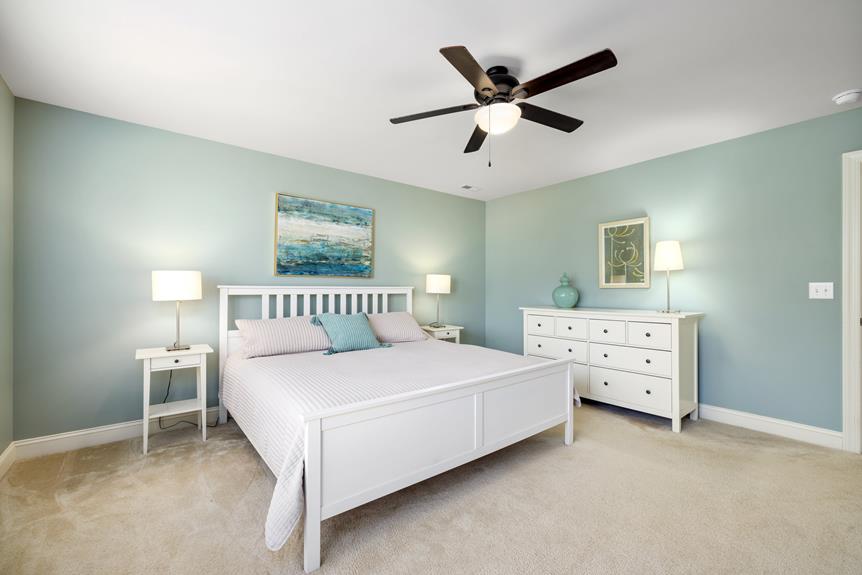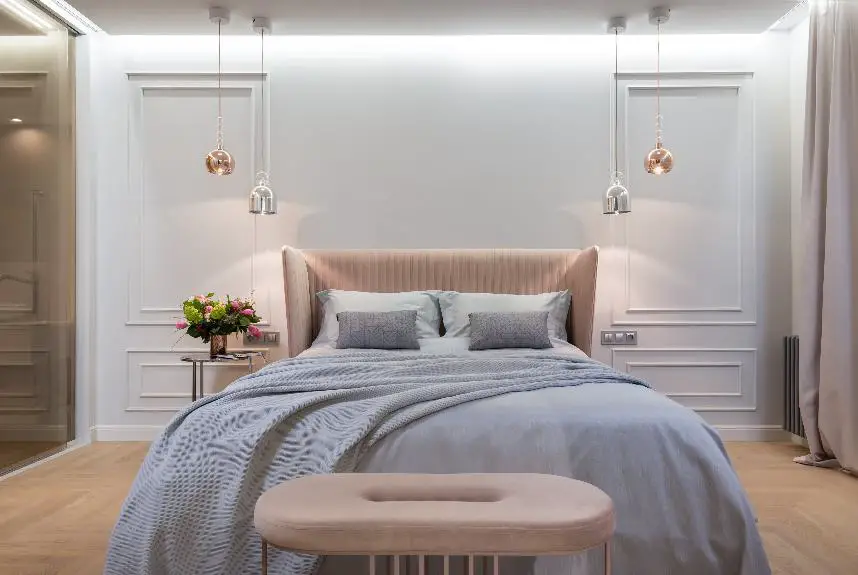When deciding whether bedroom nightstands should match, consider that matching nightstands can create a traditional and orderly look. Using different ones, on the other hand, can add personality and versatility. The choice affects the room's appearance and functionality. Personal preference and current design trends may also play a role in your decision.
The Symmetry Debate
In bedroom design, there is debate over the need for matching nightstands to achieve a visually pleasing space. Some believe that identical nightstands create a balanced and orderly appearance, which can help the room feel calm and conducive to relaxation. Others argue for a less uniform approach, using mismatched nightstands to add personality and cater to individual style and practical needs. This can also help accommodate the unique dimensions of a room and specific storage preferences.
The concept of balance can be maintained without identical furniture by considering the visual weight of different pieces. For example, a heavier nightstand on one side of the bed can be offset by a lighter, but proportionate, piece on the other side, allowing for a cohesive yet varied design.
The choice between matching or mismatched nightstands ultimately depends on personal taste, lifestyle, and the intended design of the bedroom. The goal is to create a space that is both reflective of the individual and well-organized.
Personal Style Expression
In bedroom design, using different nightstands can reflect personal style and add interest to the room. This approach can also meet different functional needs.
For example, one nightstand might have storage for books, while another might be simpler for someone with fewer items. Mixing materials like wood and metal can create contrast and enhance the room's texture.
The choice of nightstands should be based on creating a personalized and comfortable space, allowing them to be an expression of the individual's personality and design preferences.
Design Flexibility Benefits
Using non-matching nightstands allows for greater design flexibility, accommodating diverse styles and needs. This choice enables customization of the bedroom space to suit evolving preferences. The benefits of design flexibility include not just varied looks but also the opportunity for personal expression.
Mixing nightstand shapes and materials adds visual interest and breaks up the uniformity of matching sets, creating a lively and varied bedroom decor. For example, a round, wooden nightstand can be paired with a square, metallic one for a contrasting effect.
Choosing different nightstands also means you can select features that fit specific uses. One nightstand may have open shelves for books, while another has drawers for hidden storage, combining beauty with functionality.
To keep the bedroom's overall design unified, you can mix nightstands of different shades but the same material or choose ones with a small height difference, up to 4 inches, to achieve a balanced look. This approach to bedroom furniture design allows for a more customized, welcoming, and useful space.
Room Size Considerations
Room size is important in deciding whether to have matching or non-matching nightstands. Nightstands act as both decor and storage next to the bed. Their selection should consider the size of the room.
In large bedrooms, there is more freedom to choose different styles of nightstands without making the space feel cluttered. Matching nightstands can make the room look uniform, while different ones can add personality and movement.
In small bedrooms, it's important to choose nightstands that fit well with the size of the bed and the room. Large nightstands can make a small room feel even smaller and restrict movement. Different nightstands can help balance the space and make it seem larger.
When mixing nightstands, consider their size, shape, and material to ensure they fit well together in the room. The aim is to create a cohesive look that is both functional and aesthetically pleasing.
With some experimentation and creativity, a bedroom can meet practical needs and reflect personal style within the given space.
Creating Visual Interest
Selecting different nightstands can add vitality and character to a bedroom. Contrary to the expectation of symmetry, non-matching bedside tables can enhance the room's appeal. Using two different styles can reflect personal taste and make the space more engaging.
Different shapes of nightstands, such as a round vintage table paired with a modern square one, provide visual variety and prevent a monotonous look. This contrast keeps the room interesting to the eye.
Combining nightstands made from different materials adds texture to the room. For example, a wooden nightstand alongside a metal one can offer balance and contrast. The nightstands should be visually compatible in size and presence to ensure the room looks cohesive.
Using a mix-and-match approach to nightstands allows for personal expression and creativity, contributing to a unique and welcoming bedroom while keeping it visually interesting.
Practicality and Function
Nightstands should serve the user's needs, like holding a lamp or storing items. A wood nightstand with drawers may be chosen for organization, while a minimalist design might suit those who want simplicity.
Matching nightstands are optional and based on individual preference and function. A matching set offers a uniform look, but different needs may require varied types. One person may need more storage, and another might only need a shelf.
The height of nightstands should be close to the bed height for convenience, with a variation of up to 4 inches being acceptable.
Trending Bedroom Designs
In current bedroom design trends, interior decorators are choosing diverse nightstands to add character and uniqueness to bedrooms. Different nightstands can still form a cohesive look if they share common elements, such as color tone or finish. This approach emphasizes asymmetry and adds visual interest through varied shapes and materials, which can complement other bedroom furniture.
When selecting nightstands, both storage needs and design are considered important. Nightstands with similar storage functions can be selected even if they have different designs, which supports both practicality and aesthetic coherence.
The trend moves away from identical nightstands to create a more personalized and visually appealing bedroom. Designers are achieving balance and interest by experimenting with combinations that may share similarities in height or offer stark contrasts. This trend represents a shift from traditional bedroom setups and introduces a new perspective on decor.
Finalizing Your Decision
Choosing the right nightstands requires considering both their appearance and how they will be used. They should match the style of the bedroom and provide the storage you need. Consider the practical use of each nightstand; one might have more storage space for keeping bedtime items, while another might be simpler for those preferring fewer items.
Introduce different shapes or materials to add variety to the room, but ensure they share a common element, like a color or design style, to maintain a cohesive look. For example, an oak nightstand may add warmth, and a black one could provide contrast, but both should complement the room and each other.
Also, think about how the nightstands will look with other furniture in the room. They should have a consistent design theme. The height of the nightstands is important too; keeping them within 0-4 inches of each other usually looks best, although you can choose different heights for a more dynamic effect if it still looks balanced.





